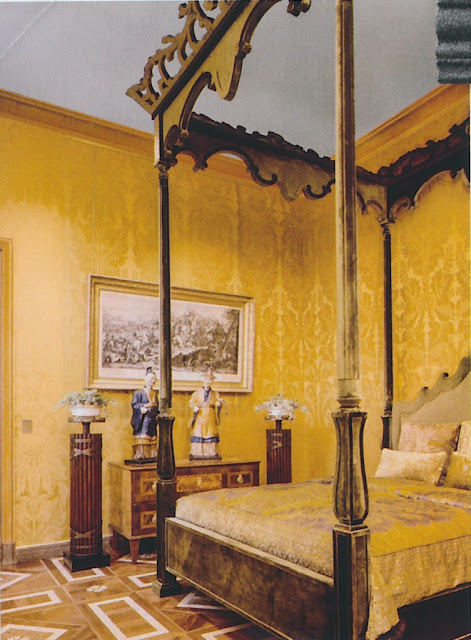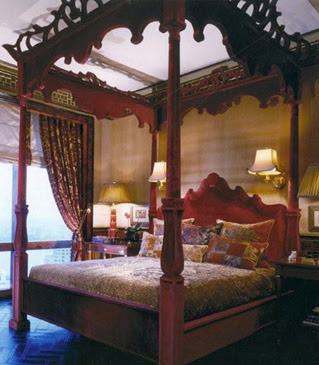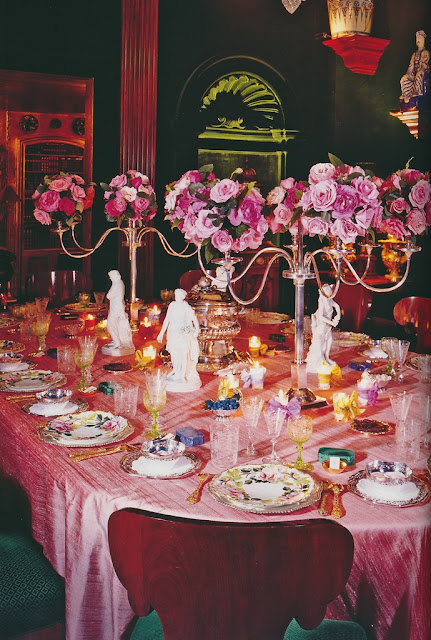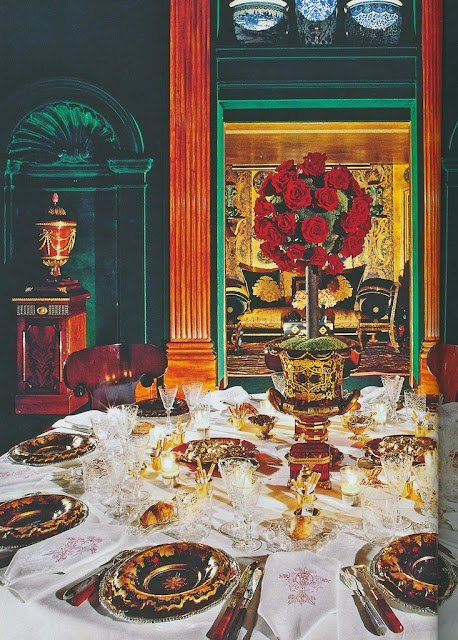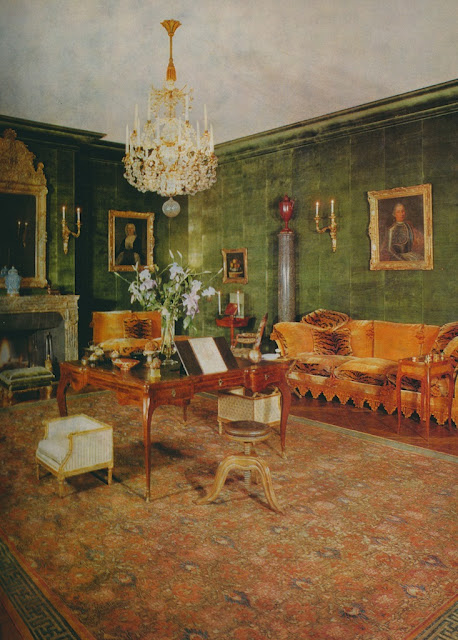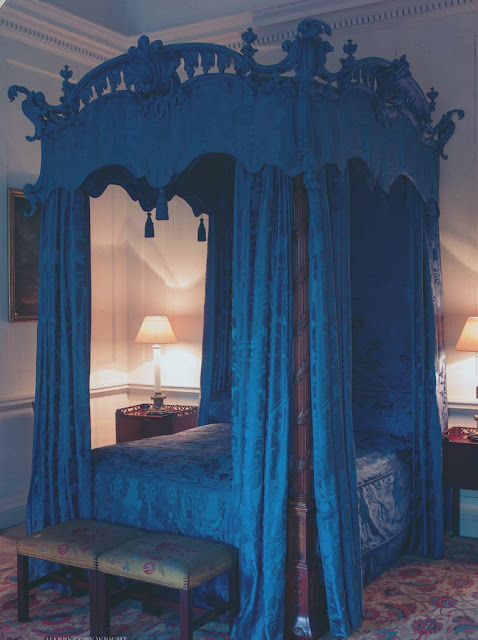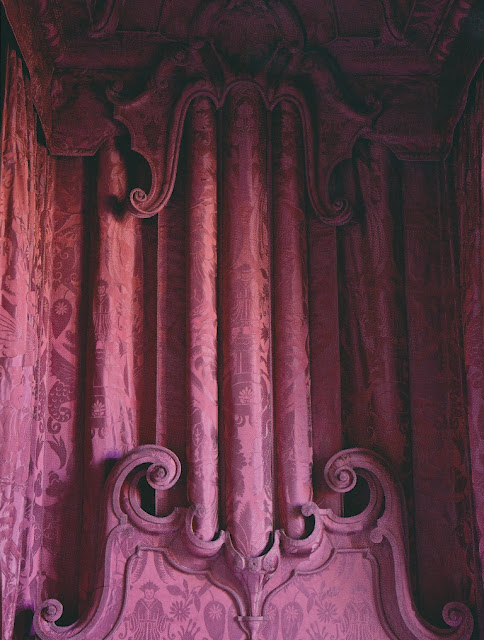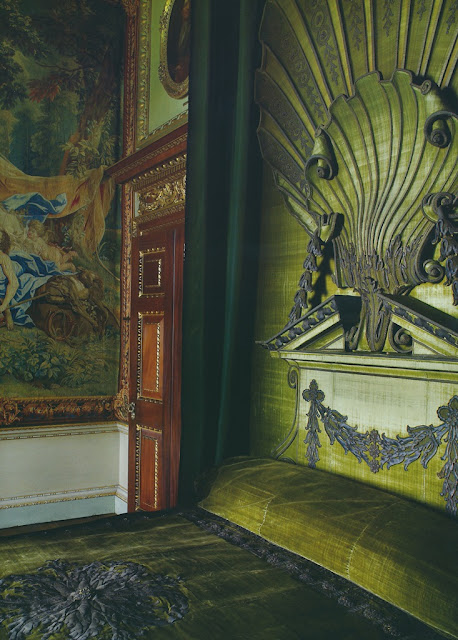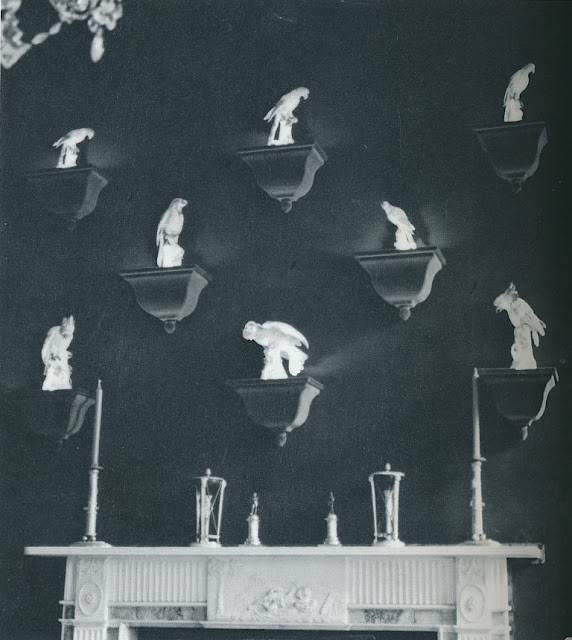Gainage. No, it's not what happens to your body after, say, a holiday season spent eating fattening foods. Rather, it's the term for the French style of upholstery in which fabric is applied to hard surfaces, such as moldings (see above) and furniture. Although I've known about this type of intricate upholstery for years, I never knew what to call it. But thanks to the July-August issue of Veranda, I can now put a proper name to a technique that must take great skill, not to mention great patience. According to Veranda, one of the leading firms that specializes in gainage is that of Charles Jouffre, a master upholsterer with workshops in Paris, Lyon, and New York. One of Jouffre's notable clients is Chilean designer Juan Pablo Molyneux, whose work sometimes features gainage beds. Can you imagine how luxurious it must be to sleep in a velvet-covered, four-poster bed?
I don't know if the late designer Alberto Pinto was a client of Charles Jouffre, but I do know that his green velvet-drenched dining room is a prime example of gainage. Look closely at the photos below, and you'll see that his dining room's shell corner niche was completely covered in the same velvet that was applied to the walls. And gainage beds can be found in a number of country houses in the U.K., including Dumfries House and Houghton Hall. (I'm not sure if British craftsmen refer to this type of upholstery as gainage. Perhaps they have an English term for it.)
Of course, not all gainage is as elaborate as fabric-wrapped state beds or corner niches. Look at those David Hicks wall brackets, below, that were covered in the same claret-colored velvet that graced the room's walls. Fabric-covered brackets are perhaps a more manageable way to indulge in the art of gainage. (I know a clever New York designer who executed his own gainage brackets, which are most becoming.) Or, you could simply hunt for an antique or vintage gainage table or cabinet. The beauty of an old fabric-wrapped piece is that its fabric, likely velvet or silk, has patina, which only adds to the allure of gainage.
Two different examples of gainage beds, which were designed by Juan Pablo Molyneux.
Two views of Alberto Pinto's dining room. This has to be one of design history's most memorable dining rooms.
Both the walls and molding in this Georges Geffroy-decorated room were covered in green velvet.
Dumfries House's famous Chippendale bed, whose canopy cresting is covered entirely in blue damask.
An early eighteenth-century tester bed in the Wentworth Bedroom of Milton, a country house in Cambridgeshire. Recently restored, the bed is covered in a silk damask that is based on the bed's original fabric.
This William Kent-designed bed is located in the aptly-named Green Velvet Bedchamber at Houghton Hall. The double-shell motif is a reference to Venus.
In this David Hicks-designed room, claret-colored velvet brackets match the room's walls.
Images #1 and #2 from Veranda, July-August issue; #7 from Town & Country, Harry Cory Wright photographer; #8 from The English Country House
 ; #9 from English Country House Interiors
; #9 from English Country House Interiors ; #10 from David Hicks Style and Design
; #10 from David Hicks Style and Design

